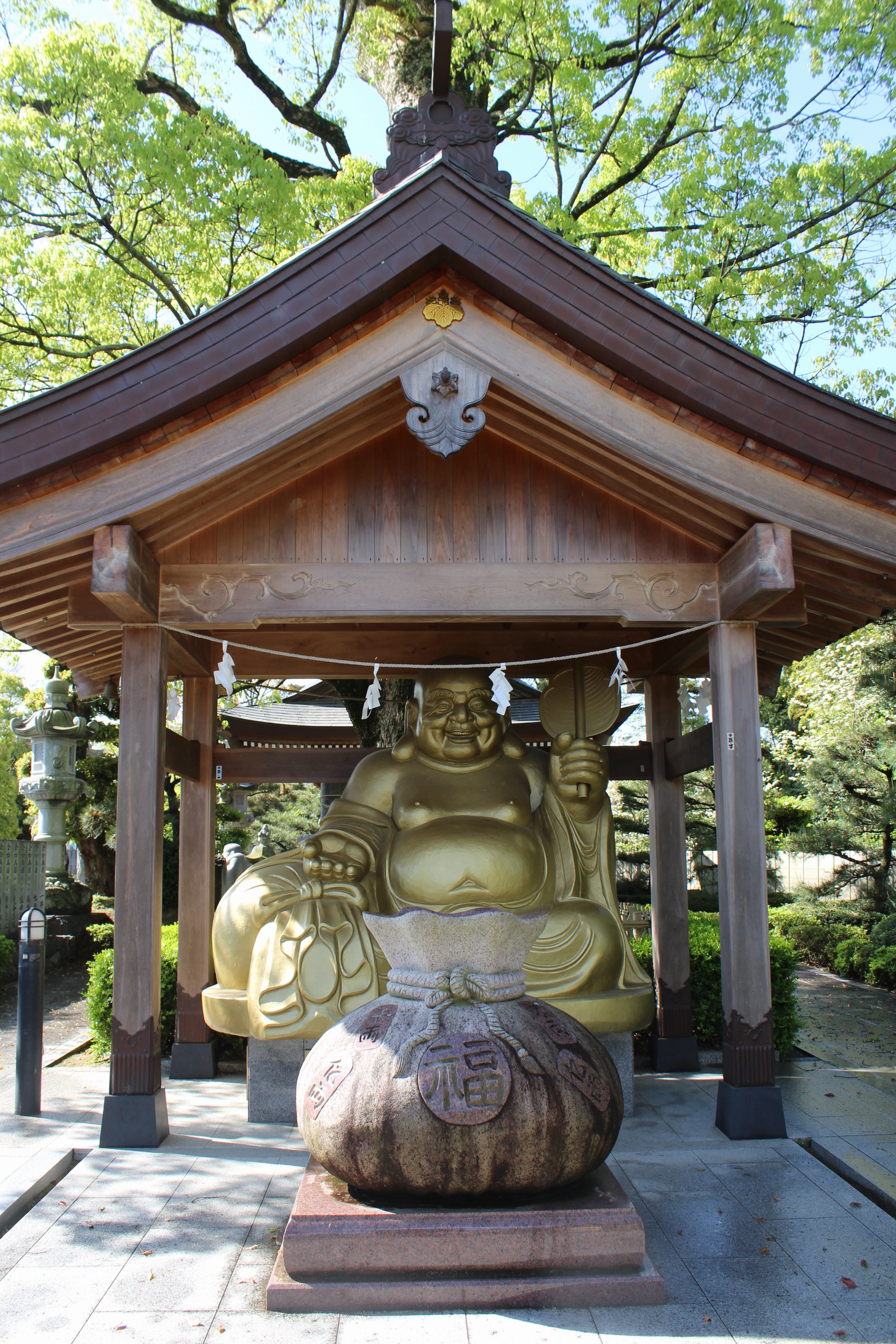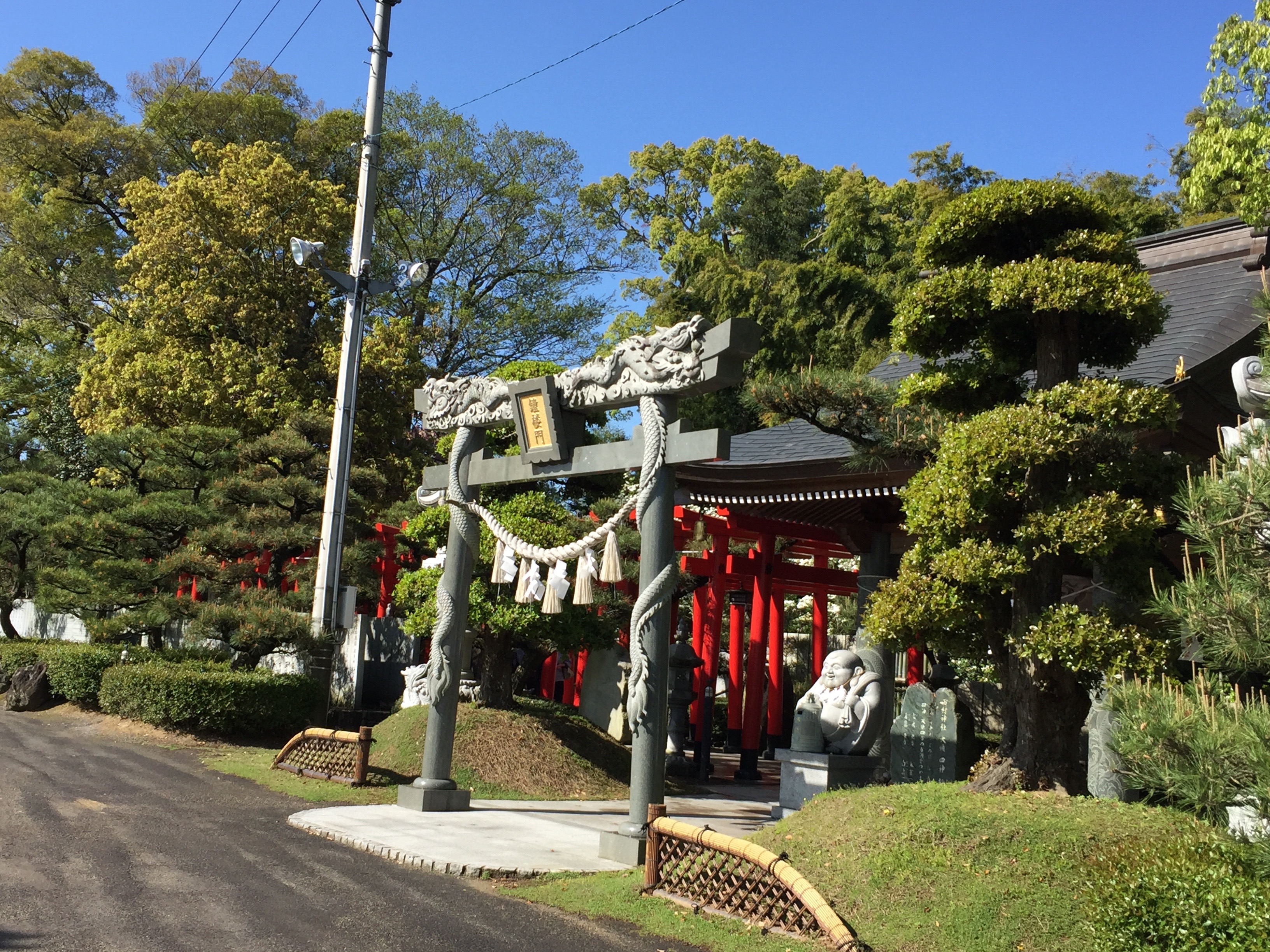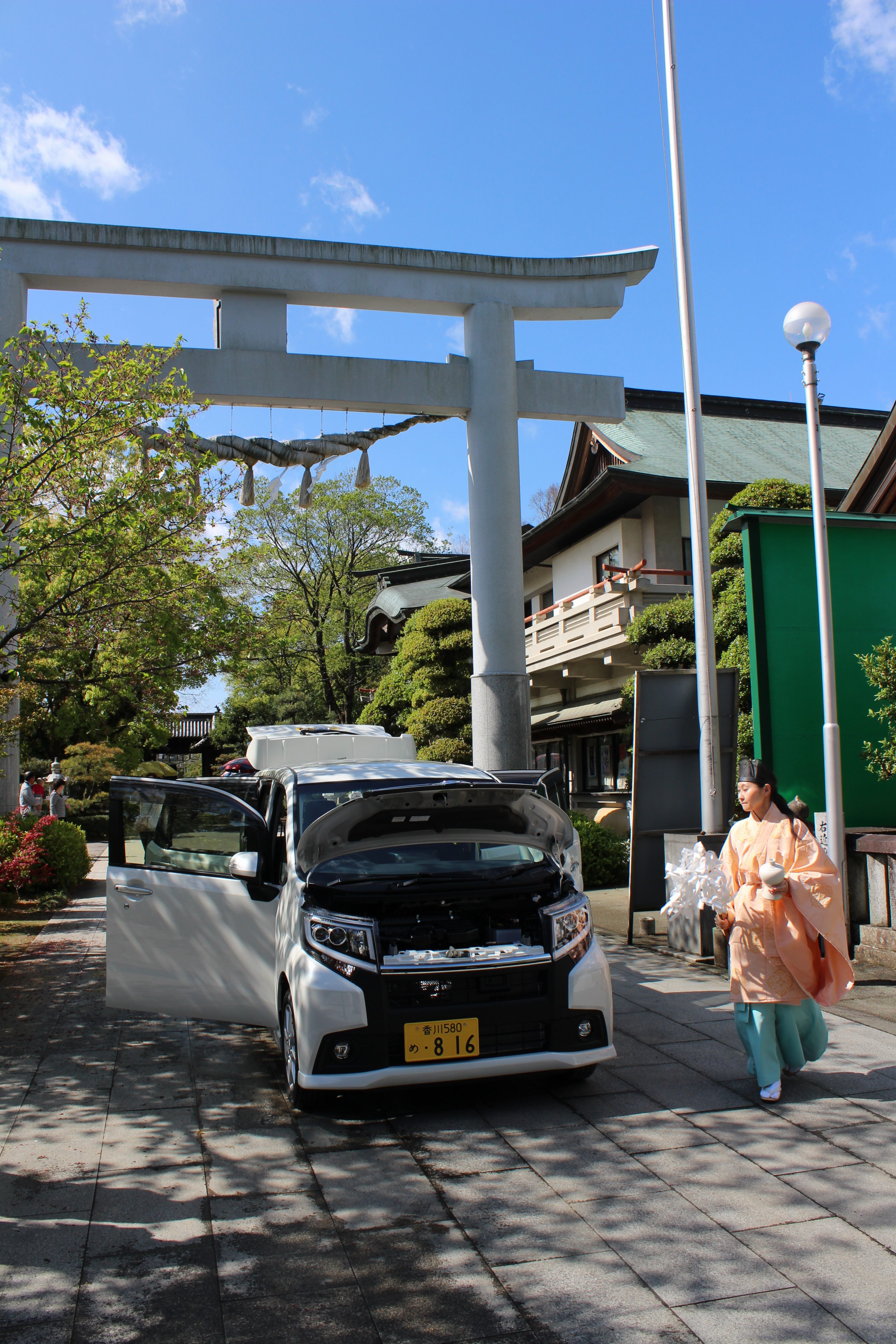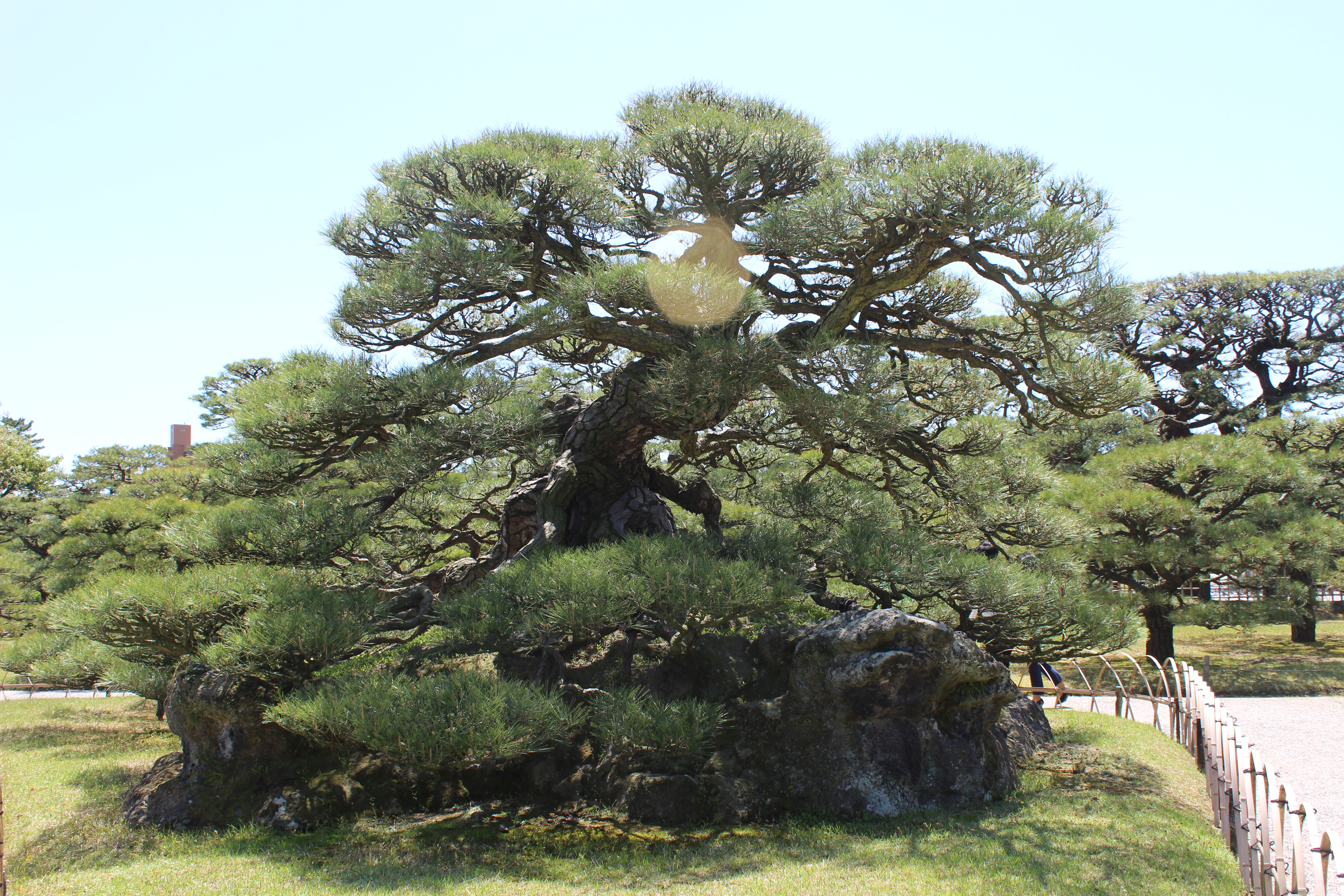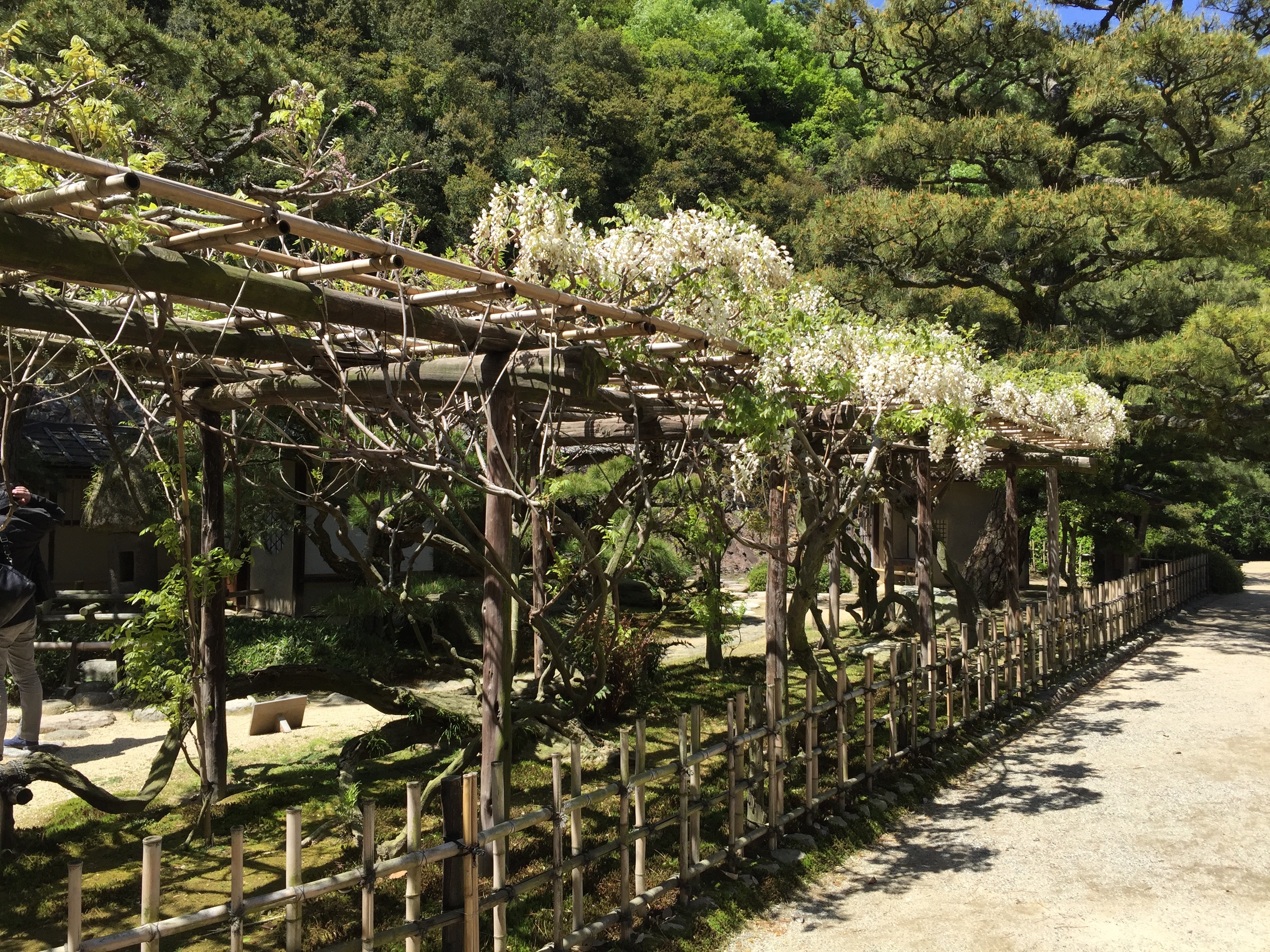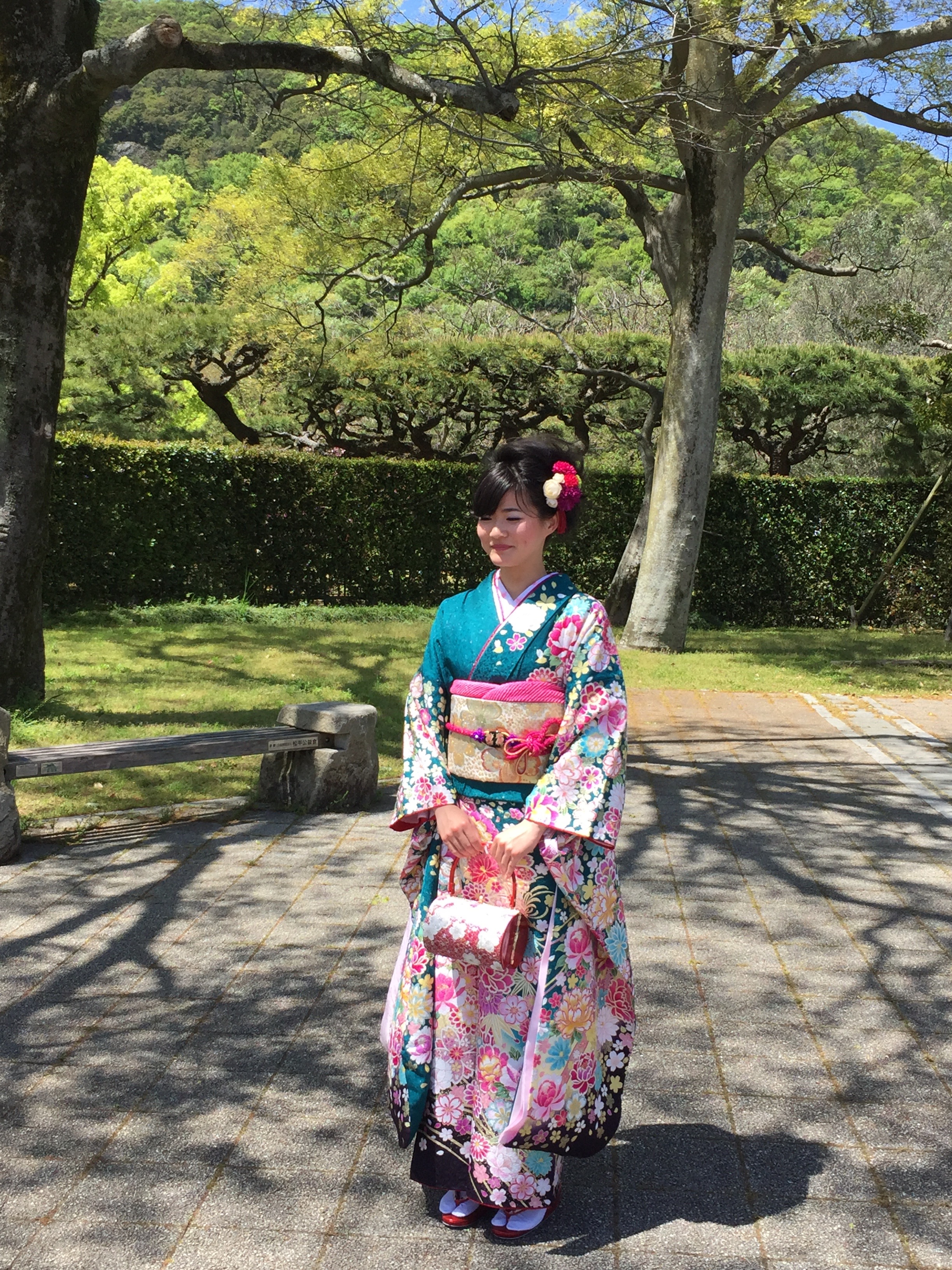Tamura Jinja and the Ritsurin Garden (temple 84)
It is estimated that there are around 100, 000 Jinjas (Shinto Shrines) in Japan.
Shinto means “way of the Gods.” Originally, the sun, the moon, mountains, trees
rocks, waterfalls, etc. were worshiped as gods or spiritual beings – spirits living
in them. Kamis were worshiped to ensure good harvests, prosperous life, etc.
One of the most fascinating Jinja’s I visited on my pilgrimage was the Tamura Jinja,
Ichinomiya (temple 83), the First Shrine in Sanuki Province now Takamatsu City.
A huge Torii (gate) at the entrance of the shrine symbolizes the transition from
profane to sacred ground. Torii means literally bird’s abode. In Japan, birds are
thought to have connections to the dead.
Hotei, god of contentment and happiness, is one of seven Gods of Good Fortune
(sometimes, identified as Miroku Bosatsu, Maitreya Bodhisattva, Future Buddha,
Bodhisattva of Friendship) at the entrance of the shrine.
Many Torii’ are indicating the sacredness of the place (sometimes donated with
donors’ names).
The building, called Haiden (lit. player building, for the visitors to pray to the
the enshrined kami of the shrine. Behind this building stands Honden (lit. main
building), which is not accessible to the public. The ritual in front of the Honden,
after cleaning hands and mouth, includes bowing, donating money, bowing twice,
clapping the hands twice, and bowing once (called ni-rei, ni-hakushu ichi-rei).
The Ox is dedicated to students. If a student wants to pass an exam, the student first
has to turn the golden ball in the mouth of the ox, then crawl underneath a hole
under the sculpture and finally pray at a specific spot.
Many sculptures of dragons can be seen in Tamura Jinja. Dragons are large,
wingless (unlike Western counterparts) and serpentine mythological creatures
associated with rainfall and bodies of water. Unfortunately, I did not know much
about them, except that I loved these creatures (Eastern dragons may be more
benevolent than Western ones in relation to humans).
Dragon with Nyoi-shu, Wishi-fulfilling Gem
Torii with dragon and Shimenawa
Besides celebrating Matsuri (big public festivals), purification rituals for different
stages of life (birth, wedding…..) are performed. The photo below shows a ritual for
a new car to ensure safety and good luck.
The city of Takamatsu is also famous for the Ritsurin Garden, one of the most famous
historical gardens in Japan. Typical for Japanese gardens, every step I took provided
another beautiful view of the scenery. The Garden is located near the Shikoku-no-
michi, the Ohenro walking route.
Lake surrounded by black pines in the Ritsurin garden
Interesting bridge
Hako-matsu Pine trees (translated as box shaped pine). The formation is achieved
by meticulous pruning methods. The scenery created by these pines is unique in the
world.
This black pine tree is one of the most beautiful pine trees in the garden. It
symbolizes a white crane spreading its wings on an enormous tortoise back (rock
symbolizes the tortoise). The Tsuru-Kame-Matsu (Crane-Tortoise-Pine Tree) stands
for longivity. It is said that cranes live for one thousand years and tortoise for ten
thousand years. This tortoise composed of some one hundred rocks.
Wisteria trellis
White Wisteria in full bloom
Lady in Kimono in the Ritsurin garden
.
.
.


